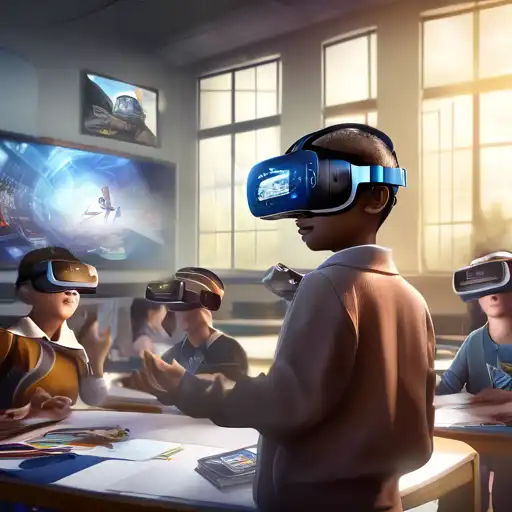Introduction to Virtual Reality in Education
Virtual Reality (VR) is revolutionizing the educational landscape, offering immersive learning experiences that were once unimaginable. This technology transports students to virtual worlds, making learning more engaging, interactive, and effective. As we delve into the potential of VR for education, it's clear that we're standing on the brink of a new era in teaching and learning.
The Benefits of Virtual Reality for Students
VR in education provides numerous benefits, including enhanced engagement, improved retention rates, and the ability to simulate real-world scenarios. Students can explore historical sites, dissect virtual frogs, or even travel through the human bloodstream, all from the safety of their classroom. This hands-on approach caters to various learning styles, making education more inclusive.
Engagement and Motivation
One of the most significant advantages of VR is its ability to captivate students' attention. Traditional learning methods often struggle to maintain student interest, but VR's immersive nature ensures that learners are fully engaged in the subject matter.
Accessibility and Inclusivity
VR technology can bridge gaps for students with disabilities, offering them experiences that might be challenging or impossible in the real world. For example, students in wheelchairs can virtually hike mountains or explore ancient ruins, providing equal learning opportunities for all.
Implementing VR in the Classroom
Integrating VR into educational settings requires careful planning and consideration. Schools must assess their technological infrastructure, train educators, and select appropriate VR content that aligns with their curriculum. Despite these challenges, the potential rewards make VR an investment worth considering.
Choosing the Right VR Tools
With a plethora of VR devices and software available, selecting the right tools is crucial. Factors to consider include cost, compatibility, and the educational value of the content. Schools should aim for solutions that offer scalability and flexibility to accommodate future advancements in VR technology.
Challenges and Considerations
While VR offers exciting possibilities, there are hurdles to overcome. Issues such as motion sickness, high costs, and the need for technical support can hinder widespread adoption. However, as technology advances and becomes more affordable, these challenges are likely to diminish.
Future Prospects
The future of VR in education is bright, with ongoing developments promising even more innovative applications. From virtual field trips to collaborative global classrooms, VR has the potential to transform education in ways we're just beginning to explore.
Conclusion
Virtual Reality is setting the stage for a transformative shift in education. By offering immersive, interactive learning experiences, VR can enhance student engagement, improve learning outcomes, and make education more accessible to all. As we navigate this new era, the possibilities are as limitless as our imagination.
For more insights into the latest educational technologies, explore our technology section.
